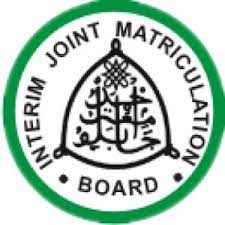Economics Keypoints: The Theory of Production; The Theory of Production is a fundamental concept in economics that delves into the processes involved in transforming inputs (factors of production) into outputs (goods and services).
Study other economics keypoints here
It explores various aspects such as types of production, concepts like total product (TP), average product (AP), and marginal product (MP), factors influencing productivity, economies of scale, production functions, and equilibrium analysis.
a. Meaning and types of production:
Meaning of Production:
Production refers to the process of creating goods and services using various inputs or factors of production such as land, labor, capital, and entrepreneurship. It involves combining these inputs to generate output.
Types of Production:
- Primary Production: Involves extracting raw materials directly from nature (e.g., agriculture, mining).
- Secondary Production: Involves converting raw materials into finished goods (e.g., manufacturing).
- Tertiary Production: Involves providing services (e.g., transportation, healthcare).
- Quaternary Production: Involves intellectual services like information technology, research, and development.
b. Concepts of production and their interrelationships:
Total Product (TP): Total output produced by a firm with a given quantity of inputs.
Average Product (AP): Total output per unit of input (e.g., the average product of labor is total output divided by the quantity of labor).
Marginal Product (MP): The additional output resulting from one more unit of input while holding other inputs constant.
Law of Variable Proportions: As more of a variable input (e.g., labor) is added to a fixed input (e.g., capital), there will be initially increasing marginal returns followed by diminishing marginal returns and eventually negative marginal returns.
c. Division of labor and specialization:
Division of Labor: Breaking down the production process into separate tasks performed by different workers to increase efficiency and productivity.
Specialization: Focusing on specific tasks or skills to become more efficient at those tasks, leading to increased productivity.
d. Scale of Production: Internal and external economies of scale:
Internal Economies of Scale: Cost advantages that a firm experiences as it expands its scale of production, such as bulk buying, specialization of labor, and technological improvements.
External Economies of Scale: Cost advantages shared by a group of firms or industries in a particular location, leading to cost reductions due to shared infrastructure, skilled labor availability, etc.
e. Production functions and returns to scale:
Production Functions: Mathematical representation showing the maximum quantity of output that can be produced with various combinations of inputs.
Returns to Scale: How output changes concerning changes in all inputs in the long run. Constant returns to scale, increasing returns to scale, or decreasing returns to scale are observed.
f. Producers’ equilibrium isoquant – isocost and marginal analyses:
Isoquant-isocost Analysis: Determining the least-cost combination of inputs to produce a particular level of output by comparing isoquants (equal production) with isocost lines (equal cost).
Marginal Analysis: Comparing the additional cost (marginal cost) with the additional benefit (marginal revenue or product) to determine optimal production levels.
g. Factors affecting productivity:
Factors like technological advancements, quality of inputs, human capital, infrastructure, government policies, and managerial efficiency influence productivity.
FAQs
i. Relate TP, AP, and MP with the law of variable proportion:
- Total Product (TP): It represents the overall output produced by a firm using specific input quantities. As more units of a variable input are added to a fixed input, TP initially increases at an increasing rate (due to increasing marginal returns), then at a decreasing rate (diminishing marginal returns), and eventually may decline (negative marginal returns).
- Average Product (AP): It is calculated as the total product divided by the quantity of the variable input. AP rises when MP exceeds AP and falls when MP is less than AP.
- Marginal Product (MP): It denotes the change in total product resulting from an additional unit of input. MP initially increases and then decreases due to the law of diminishing marginal returns.
ii. Compare internal and external economies of scale in production and their effects:
- Internal Economies of Scale: These arise from factors within a firm, such as specialized labor, technological advancements, and bulk purchasing. Effects include lower average costs and increased efficiency due to specialization and division of labor.
- External Economies of Scale: These stem from external factors like industry clustering, shared infrastructure, or skilled labor availability in a region. Effects include cost advantages for firms in a specific industry or location due to shared resources or networks.
iii. Identify types of production functions:
- Linear Production Function: Outputs change linearly with changes in inputs.
- Cobb-Douglas Production Function: A widely used function showing a combination of inputs affecting output with specific parameters.
- Leontief Production Function: Assumes inputs are perfect substitutes, resulting in a fixed output ratio.
- CES (Constant Elasticity of Substitution) Production Function: Represents substitutability between inputs.
iv. Compare different returns to scale and their implications:
- Constant Returns to Scale: When all inputs are increased by a certain proportion, output increases by the same proportion. Implication: No change in efficiency.
- Increasing Returns to Scale: When all inputs are increased, output increases at a higher proportion. Implication: Enhanced efficiency leading to cost savings.
- Decreasing Returns to Scale: When all inputs are increased, output increases at a lower proportion. Implication: Diminished efficiency leading to higher average costs.
v. Determine the firm’s equilibrium using isoquant-isocost and marginal analyses:
- Isoquant-Isocost Analysis: It helps in identifying the least-cost combination of inputs to produce a certain level of output by comparing the slope of the isoquant (production level) with the isocost (cost level) line.
- Marginal Analysis: It involves comparing the marginal cost of production with the marginal revenue or product to determine the optimal production level where marginal cost equals marginal revenue.
vi. Identify factors affecting productivity:
- Technological Advancements: Innovations that improve efficiency and output.
- Quality of Inputs: Higher quality inputs can increase productivity.
- Human Capital: Skilled and educated workforce contributes to increased productivity.
- Infrastructure: Access to better infrastructure can enhance productivity.
- Government Policies: Policies affecting regulations, taxes, and subsidies influence productivity.
- Managerial Efficiency: Competent management can significantly impact productivity through effective decision-making and resource allocation.
Understanding these objectives allows economists and businesses to make informed decisions, optimize production processes, and achieve efficiency in resource utilization.












